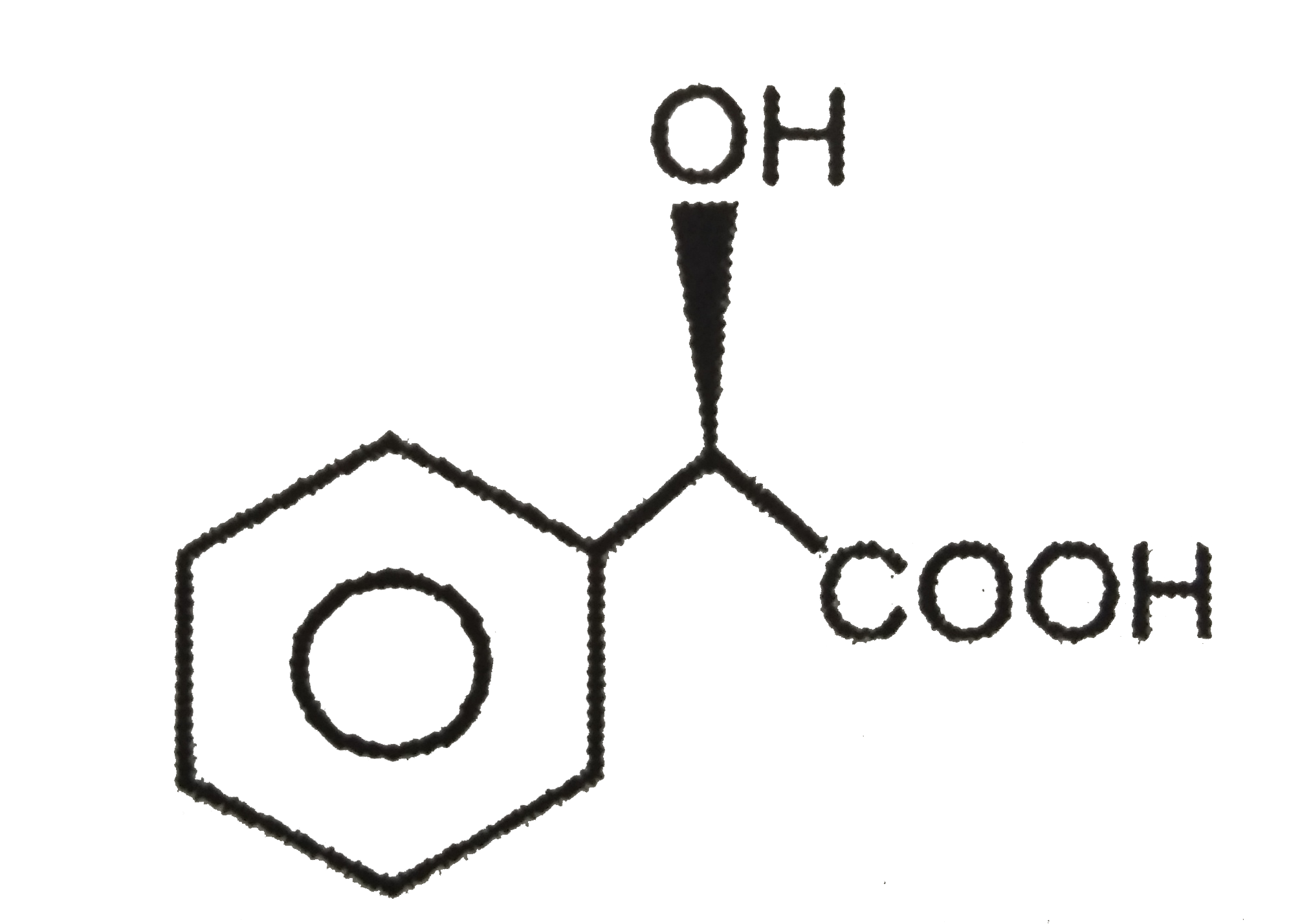Pure cholesterol has a specific rotation of -32. A sample of cholesterol prepared in the lab has a specific rotation of -8. The enatiomeric excess of the sample of chloresterol is x%. X is :
The correct Answer is:25
Step by step video, text & image solution for Pure cholesterol has a specific rotation of -32. A sample of cholesterol prepared in the lab has a specific rotation of -8. The enatiomeric excess of the sample of chloresterol is x%. X is : by Chemistry experts to help you in doubts & scoring excellent marks in Class 12 exams.
Topper's Solved these Questions
- BOOK - RESONANCECHAPTER - STEREOISOMERISMEXERCISE - EXERCISE (PART III : ONE OR MORE THAN ONE OPTIONS CORRECT TYPE)14videos
STEREOISOMERISM
- BOOK - RESONANCECHAPTER - STEREOISOMERISMEXERCISE - EXERCISE (PART IV : COMPREHENSION)5videos
STEREOISOMERISM
- BOOK - RESONANCECHAPTER - STEREOISOMERISMEXERCISE - EXERCISE (PART I ONLY ONE OPTION CORRECT TYPE)10videos
STEREOISOMERISM
- BOOK - RESONANCECHAPTER - SOLUTIONSEXERCISE - Advabced Level Problems (PART-2)35videos
SOLUTIONS
- BOOK - RESONANCECHAPTER - STRUCTURAL IDENTIFICATIONEXERCISE - Advanced level Problems (Part-III)12videos
STRUCTURAL IDENTIFICATION
Similar Questions
Pure enantiomer of lactic acid has an optical rotation of +1.6∘. A sample of lactic acid has an optical rotatin of +0.8∘. The enantiomer exces is X×101%. Find X
View SolutionCholesterol, when isolated from natural sources, is obtained as a single enantiomer. The observed rotation α of a 0.3 g sample of cholesterol in 5mL of chloroform solution contained in a 10 cm polarimeter tube is −0.78∘. Calculate the specific rotation of cholesterol. A sample of synthetic cholesterol was prepared consisting entirely of (+)-cholesterol. This synthetic (+)-cholesterol was mixed with some natural (-)-cholesterol. The mixture had a specific rotation [α]20D of −13∘. What fraction of the mixture was (+)-cholesterol ?
View Solution
Knowledge Check
- Question 1 - Select One
Pure (S)-2-butanol has a specific rotation of +13.52 degrees. A sample of 2-butanol prepared in the lab and purified by disillation has a calculated specific rotation of + 6.76 degrees. What can you conclude about the composition ?
A50% (S), 50% impurityB50% (S),50% (R)C50% (S), 50% racemicDsome other mixture - Question 2 - Select One
Dextrororatory bytan−2−ol has a specific rotation [α]25D=+13.52∘. A sample of butan−2−ol shows a specific rotation [α]25D=+6.72∘. Calculate the enantiomers excess (or optical purity) of the sample?
A60%B50%C70%D80% - Question 3 - Select One
Compound which rotates the plane polarised light is known as optically active compound . On the basis of direction of rotation two forms of an optically active compounds are termed as dextro and laevo rotatory . The two are termed as enantiomers . If we have a 1 : 1 mixture of d and l isomers of a given chiral compound , optical rotation of such mixture is zero Such a mixture is optically inactive and is called a recemic modification.
The net specific rotation of any mixture of the d and isomers of a given chiral compound is equal to the weighted average of the rotations due to both the isomers Mathematically if can be expressed as :
[α]≠t=fd[αd]+f1[αl]
Where fa and fl are fractions of d and l isomers respectively and [αd],[αl] are their specific rotations
What is the enantiomeric excess in any pure sample of an optically active substance ?A0.5B1C0DDepends upon the specific rotation
A sample of optically active alochol has a specific ratation, [α]25D, equal to +1.51∘.
a. What is the percentage enantiomeric excess of the sample?
b. Which enantiomer is in excess, (R)or(S)?View SolutionLet (+) tartaric acid has a specific rotation of+11.1, Calculate the specific rotation of a mixture of 68%(+) tartaric acid and 32%(−) tartaric acid.
View Solution(R)-2-methyl-1-butanol has a specific rotation of +13.5∘. The specific rotation of 2-methyl-1-butanol containing 40% of the (S)-enantiomer is _____
View SolutionPure (R) Mandelic acid
 has specific rotation of 150. If a sample contains 60% of the R and 40% of its enantiomer, the [α] of his solution is. View Solution
has specific rotation of 150. If a sample contains 60% of the R and 40% of its enantiomer, the [α] of his solution is. View Solution(+) mandelic acid has a specific rotation of 158∘ What would be the observed specific rotation of a mixture of 25% (-) mandelic acid and 75% (+) mandelic acid ?
View Solution

